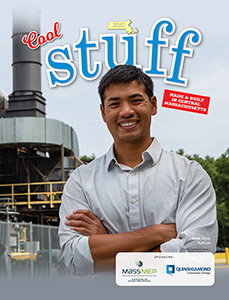New York-based Sports Engineering is developing a shoe utilizing new technology to help reduce the occurrence of common sports injuries like ACL and MCL tears and ankle injuries. The technology was licensed by Worcester Polytechnic Institute professor Christopher Brown. In an interview, Brown spoke about the shoe and how it could play a role on sports biggest stages.
How does this technology work?
Basically what it does is transmits the load you usually use for sports. It has a special device that works when your body exceeds those limits we set and continues to transmit forces at the highest acceptable level. We avoid getting to the threshold of injurious forces that way.
You shouldn’t even notice when the shoe responds because of the way it is going to absorb energy at high loads.
How has this been tested?
So far, it’s an engineering design. We’ve done small proof of concepts, and we’re working on some other ones. The kind of testing that will be interesting would be the testing we do on people’s feet and looking at their epidemiology. For that we need to get lots of people in these.
Does this require U.S. Food & Drug Administration approval?
I don’t think so, but I would leave that to the experts. My expertise is in mechanics.
How did you get involved in this technology in the first place?
I was a ski racer and coach at the University of Vermont, and I got working with a group there in orthopaedics as a graduate student on ski injuries and how ski bindings play a role. My interest in ski bindings developed, and I never really lost it.
Ski bindings are different, but we try to do the same thing: transmit the loads you need for skiing up to an acceptable, safe level, and then release.
What kind of technology is actually in the shoe?
It’s what we’re calling the SmartSpring system. It’s a concept I’ve been working on since my doctoral work in the 1970s when I was working on ski bindings. It looks nothing like any springs you usually see. It’s a different kind of spring configuration to achieve high load transmission.
Could this same idea be applied to physical therapy or non-athletes with knee problems?
As you think about this, you can say when I’m walking around and do this kind of movement, it kind of hurts my knee. We could design different configurations and shoes useful for people recovering from injuries or people whose knees hurt when they walk.
How long have you been working with Sports Engineering?
Two years. They formed just for this opportunity.
Have you ever developed anything else like this?
Nothing that’s on the market, but we have patents on ski bindings and skates from other work I’ve done with students here for similar ideas.
This interview was conducted and edited for length and clarity by WBJ Staff Writer Zachary Comeau.



